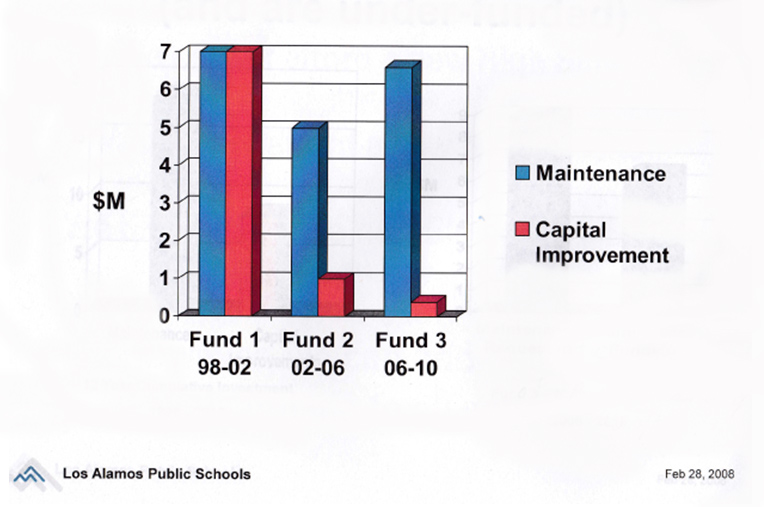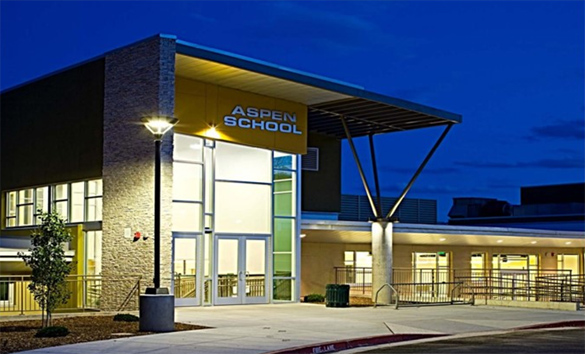
I am writing to explain how the priorities for facilities maintenance investments has changed from the early 2000s.
I’ll give an overview of expenditures from early 2000s, and give an example of how our new vision is successful.
Facilities Maintenance in early 2000s
I have attached a slide from a School Board meeting in 2008 (before I was on the Board). I need to state a few caveats and insights with this slide:
The bar graph shows a comparison of expenditures for facilities maintenance versus capital improvements, e.g. major renovations. This graph demonstrates that the School District was spending significant amounts of money to maintain our old outdated facilities while the amount of money dedicated to major renovation projects was declining. LAPS was heading in a direction where we would have been perpetually repairing old, outdated facilities so that our students could be educated in old, outdated facilities.
A Successful Example of New Priorities:
 Courtesy image
Courtesy imageSince the passing of the 2009 General Obligation Bond, LAPS has done major renovations at Los Alamos High School, Los Alamos Middle School and Aspen Elementary School. I’d like to highlight the Aspen renovation as a great example as to why renovating our schools is superior to high expenditures for facilities maintenance.
Every three years, the School District is required to provide the State with a facilities condition report. This report is called the Five Year Facilities Master Plan and it is created by a private contractor hired by LAPS. As part of this plan, for each of our schools, the facilities maintenance projects that are required to bring our sites “up to current physical and programmatic standards” and the associated costs are listed. The 2008 report, prior to the Aspen renovation, listed the required facilities maintenance costs at a total of $12.2 million. The 2015 report, subsequent to the Aspen rebuild, stated there were no major facilities projects required for this site. The renovation of Aspen school immediately saved over $12 million in maintenance costs! Now, let’s look at how much the renovation cost the taxpayers of Los Alamos. Total renovation of Aspen was $20 million, the funding by the State of New Mexico gave us $8 million. This means that the total cost to the taxpayers of Los Alamos to renovate Aspen school was $12 million. We spent $12 million to renovate Aspen and we reduced the facilities maintenance by $12 million. The Aspen renovation paid for itself before the first student ever walked through the doors of the new school, and now we have a wonderful new school that will have substantially lower maintenance costs for 20 years.
 Aspen Elementary School. Courtesy photo
Aspen Elementary School. Courtesy photo
Thank you for your continued support
In closing I would like to thank the citizens of Los Alamos for their continued support of Los Alamos Public Schools. I would also like to emphasize that we take the obligation of fiscal responsibility very seriously. Thank you.

